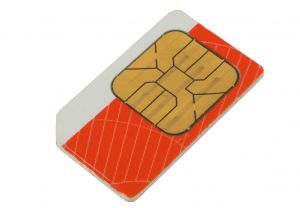The holiday season is upon us and there is a lot of activity around this time of the year with parcels being delivered both at home and at the university. This is being exploited by the scammers.
There is currently a UPS scam making its rounds in university mailboxes, where victims are lured into clicking a download link.
If you have received a package via the parcel company like UPS or DHL, you might be tempted open up an e-mail that seems to come from them, saying they have a package for you. There might be an attachment that you are asked to open to confirm your address or to fill in your personal details for “verification”.
The whole thing is a scam. Clicking on the attachment will download a Trojan virus onto your computer which will just sit there doing its nefarious work — reading your files, including confidential information, then transmitting the details to a server somewhere that is controlled by the criminals.
It seems there are two main variations of this “parcel delivery” scam – both looking like a genuine notification.
- The first one tells you the parcel service tried, but was unable to deliver a package to you because of an incorrect address. The subject heading usually has a phony tracking number. The attachment is supposedly a copy of a waybill or invoice for you to print and use to collect the parcel from a UPS office.
- The second is a customs notification and may even seem to come from “US Customs Service” rather than UPS. It says you have an international package (usually from Europe) and that you need to complete the attached customs form so it can be delivered.
In both these cases, the attachment is a compressed ZIP file (that is, one with a name that ends in “.zip”), even though the icon may look like a Word document. As soon as you double click on it, it will install a program onto your computer will then download and install several files on your system. These may disable your firewall, look for and steal credit card and bank account details, make screen snapshots and allow hackers full access to your machine.
This attack underlines the danger of opening an attached file in an email, even if it appears to come from a person or organization you know or frequently deal with.
Here is an example of one such mail.
From: Usps Parcel [mailto:shipment@uspc.com]
Sent: 28 November 2016 07:29 AM
To: Recipients <shipment@uspc.com>
Subject: Parcel Receipt
USPS Shipment Notification
A parcel was sent to our office for you and we have tried to deliver it several times to your address on file.
Attached is the receipt via Dropbox, used in sending you the parcel. We advise you DOWNLOAD the document and reconfirm the address on receipt if its your valid address.
For further assistance, please call USPS Customer Service.
For International Customer Service, please use official USPS site.
Copyright © 2016 USPS. All Rights Reserved.
—
This message has been scanned for viruses and dangerous content by Fair Distribution MailScanner, and is believed to be clean.Â
So do not succumb to the temptation of opening up attachments in emails, especially if it comes from couriers and parcel delivery companies like UPS or DHL. It is the end of the year. Our energy and concentration is ebbing and we are all more vulnerable, making us all potential targets of the cyber-criminal.
[ARTICLE BY DAVID WILES]



 How does a SIM swap scam work?
How does a SIM swap scam work?